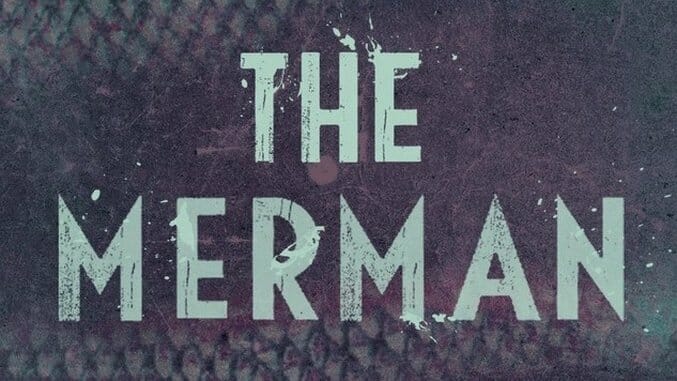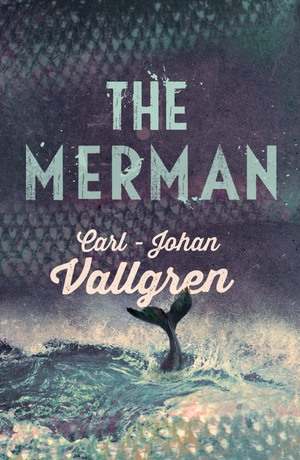
The titular beast and Scandinavian setting of Carl-Johan Vallgren’s novel appear to hint at something chimerical…not fantastic, per se, though certainly alien and bizarre. But The Merman does not read like magical realism—a label that comes close yet is worn as comfortably as pointe shoes. It’s far too intimate, too concerned with the depths and gyres existing between older and younger siblings and, most of all, between abusers and victims. The titular merman is real in the flesh and scale and siren, but he is unromantic, covered both literally and figuratively in a patina of filth, blood and slime. He is as powerful as a pin in a grenade, and Vallgren’s expert availing of the merman’s presence on the periphery greatly enhances the true meaning of the novel.
 The social depths and shades of love that are The Merman’s real concern are drawn with a naked tenderness and violence, expedited by Vallgren’s—in Ellen Flynn’s translation, at any rate—surgically laconic prose. In a small town on Sweden’s western coast, Nella lives with her younger brother Robert. They are, for all intents and purposes, alone in their bleak yet beautiful world, shepherded with a broken crook by their haint of a mother, their mercurial dad and various school and government officials. While the siblings find some comfort and aid (not to mention food) in the eccentric Professor and Nella has a close friend in schoolmate Tommy, it’s in each other that they take refuge. Nella protects Robert—bent, broken, blind, the victim of brutal adolescence and adolescents—and Robert gives Nella a reason to live and breathe.
The social depths and shades of love that are The Merman’s real concern are drawn with a naked tenderness and violence, expedited by Vallgren’s—in Ellen Flynn’s translation, at any rate—surgically laconic prose. In a small town on Sweden’s western coast, Nella lives with her younger brother Robert. They are, for all intents and purposes, alone in their bleak yet beautiful world, shepherded with a broken crook by their haint of a mother, their mercurial dad and various school and government officials. While the siblings find some comfort and aid (not to mention food) in the eccentric Professor and Nella has a close friend in schoolmate Tommy, it’s in each other that they take refuge. Nella protects Robert—bent, broken, blind, the victim of brutal adolescence and adolescents—and Robert gives Nella a reason to live and breathe.
The sociopathic Gerard, a fearsome boy who is introduced setting a kitten ablaze, torments both siblings. A genuinely disturbing and well-written villain, he is far more monstrous than the creature from the ocean; the terror he causes bleeds off the page, and the reader’s only response to his arrival is a despondence even the most famously savage of characters cannot hope to inspire. There are more disturbing constructs—the internecine consciousness of American Psycho’s Patrick Bateman springs to mind—but few paralyze with their capacity for violence and blank-eyed brutality as Gerard does. One by one, Gerard disposes of the would-be saviors who could protect the siblings, his campaign of terror fueling the ferocious engine at the heart of the book.
Nella, between bouts of shoplifting to pay Gerard’s “tribute” and navigating the crippling web of her home, school and social life, forms a bond with the merman. He communicates with her via something resembling telepathy—a nod to the tales of mermaids luring sailors to their deaths—but remains mysterious and inscrutable. Caught between the intractable pull of twin but opposite monsters, Nella proves all the more human. When she says that she would surrender her bond with the merman, a creature of literal fantasy, to keep Robert safe, the soul of Vallgren’s story is as bared and riven as an abyssal fish.
It’s telling that stoic Nella’s greatest fear is not the merman, not her father or his associates, not even Gerard, but the chance that she and Robert may be separated—that the price they could pay for being lifted from Hell would be to plunge into a personal one unimaginably worse. With this realization, Vallgren spares the creature of legend and saves the cruelest face for us.
B. David Zarley is a freelance journalist, essayist and book/music/art critic currently based in Chicago. A former book critic for The Myrtle Beach Sun News, his work can be seen in Hazlitt, VICE, VICE Sports, The Creators Project, Sports on Earth, The Classical and New American Paintings, among numerous other publications. You can find him on Twitter or at his website.